Picturesque town of Moshny ~ Part #2
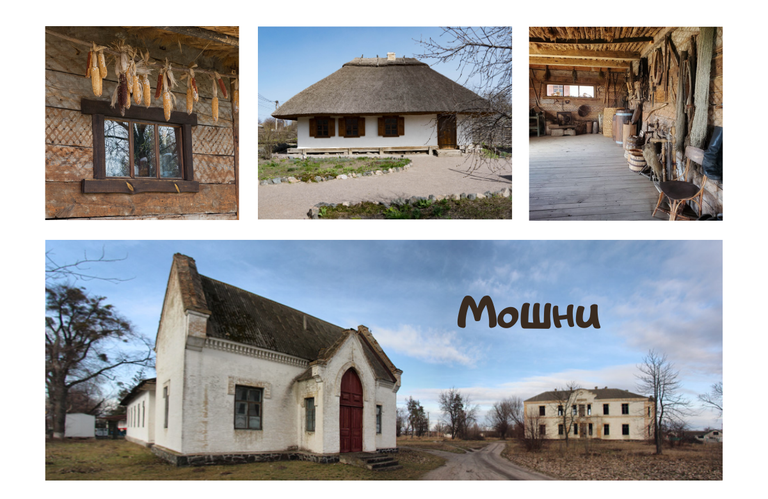
Hello there!
Today I continue my story about a Ukrainian village of Moshny that has the rich architecture and cultural history of an ancient city, but has not yet become attractive for tourists. So far, hopefully. This place impressed me a lot.
The Chancellery (Office)

This is the oldest brick building in the village of Moshny. People call it Vorontsov's Chancellery. There are two versions of how and when it was built. According to one of them, the building appeared in 1800-1801 before these lands passed to Count Vorontsov as a wedding dowry of his wife Elizaveta Branytska, the other says it was built 20 years later by Vorontsov's order. One thing is certain - the building served as the chancellery of the estate. It was the only one in this entire area, so it was simply called Chancellery.
The further fate of the Chancellery is also not precisely established. Those were stormy times...
There are versions that there was a club, classrooms of the school located nearby, or workshops. No one knows exactly when the one-story extension from the back appeared.
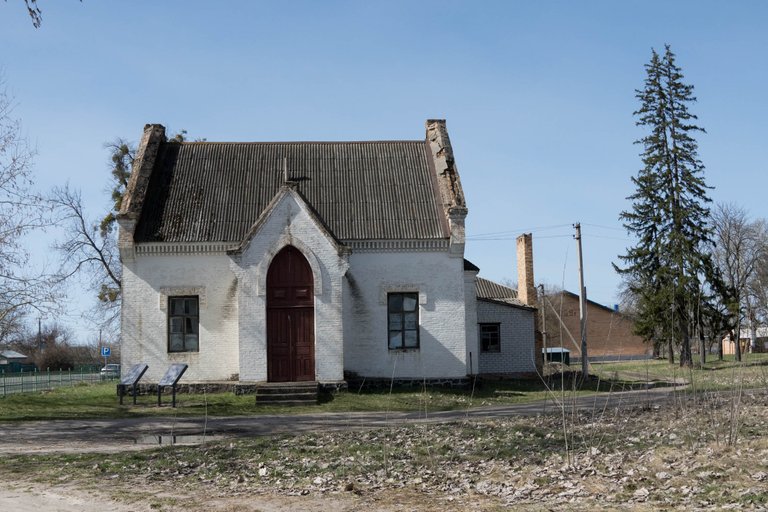
Institute for Noble Maidens (The boarding house of young noble ladies)
It was also called Hellenes' school for the Greek (Hellenes) education system.
The local landowner and Vorontsov's granddaughter Kateryna Balashova opened a two-class girls' school in 1901 Moshny with her own funds. The pathetic name "Institute for Noble Maidens" means a boarding house for the children of wealthy residents of the district where they learned literature, history, languages, playing musical instruments, singing, dancing and good manners.
Teaching was conducted according to Greek standards and in the Greek language. Dance teachers from St. Petersburg, music teachers from Odesa, as well as teachers from Kyiv and Poltava, were invited to work at this boarding house.
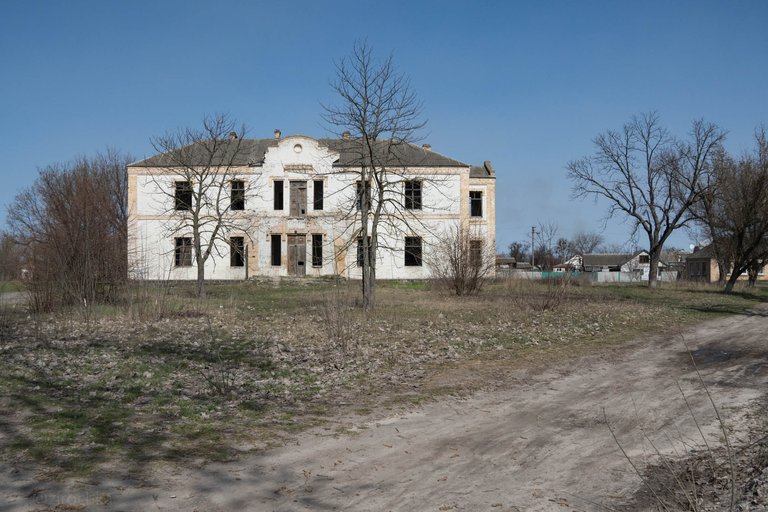
After the collapse of Soviet Union, this building was sold for nothing. Now private owner is ready to sell it back to the state for hundreds of thousands of dollars. Apparently, the state does not have such funds. And instead of making a museum or a cultural space here, the private owner waits while the building stands empty and crumbles.
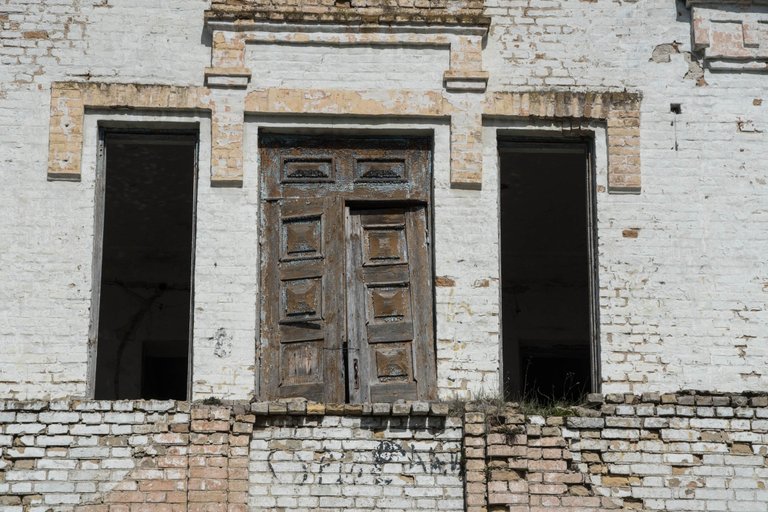
I wouldn't even physically be able and certainly wouldn't dare to sneak in. If not for my hubby Nick. A woman always feels more confident when a man stands behind her. However the reverse statement is also true.😉 Nick said you go and I'll stay outside. But eventually, he couldn't resist too. 😁

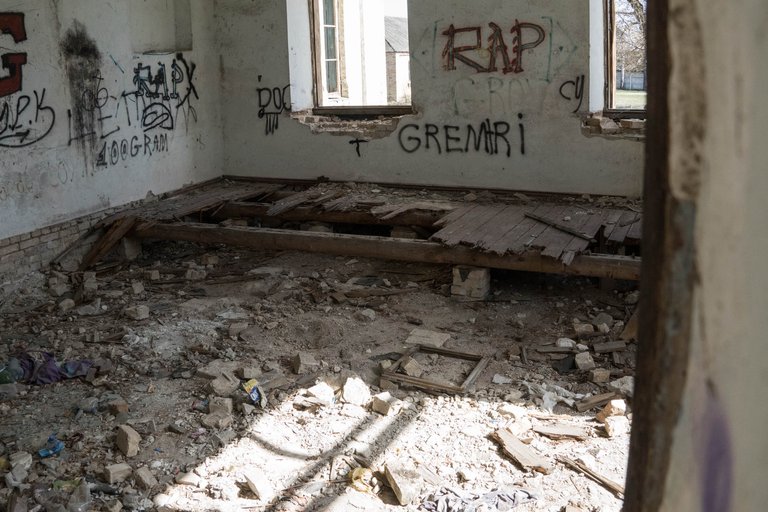
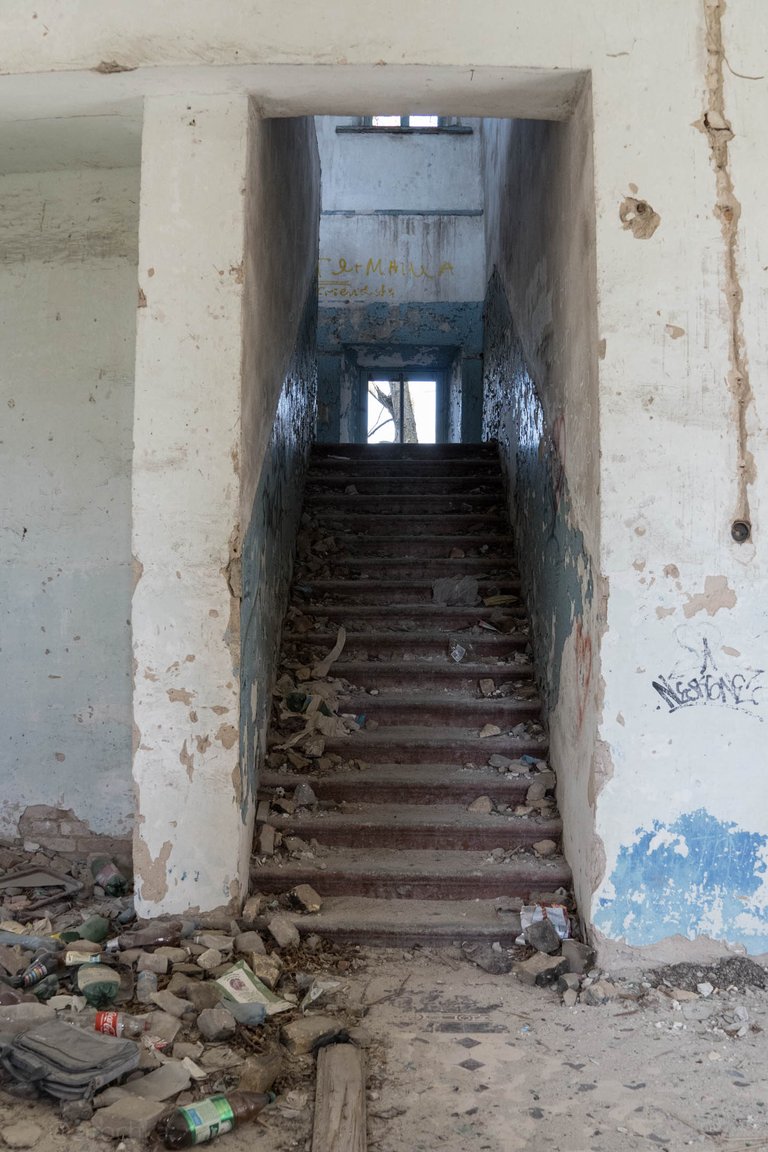
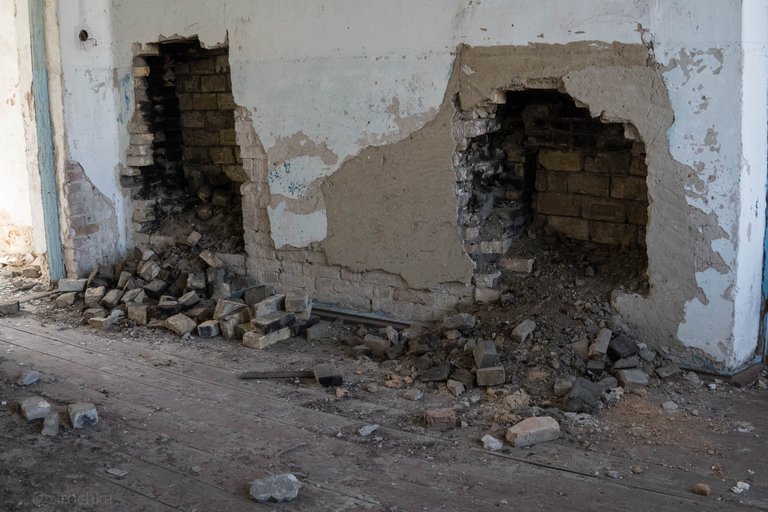
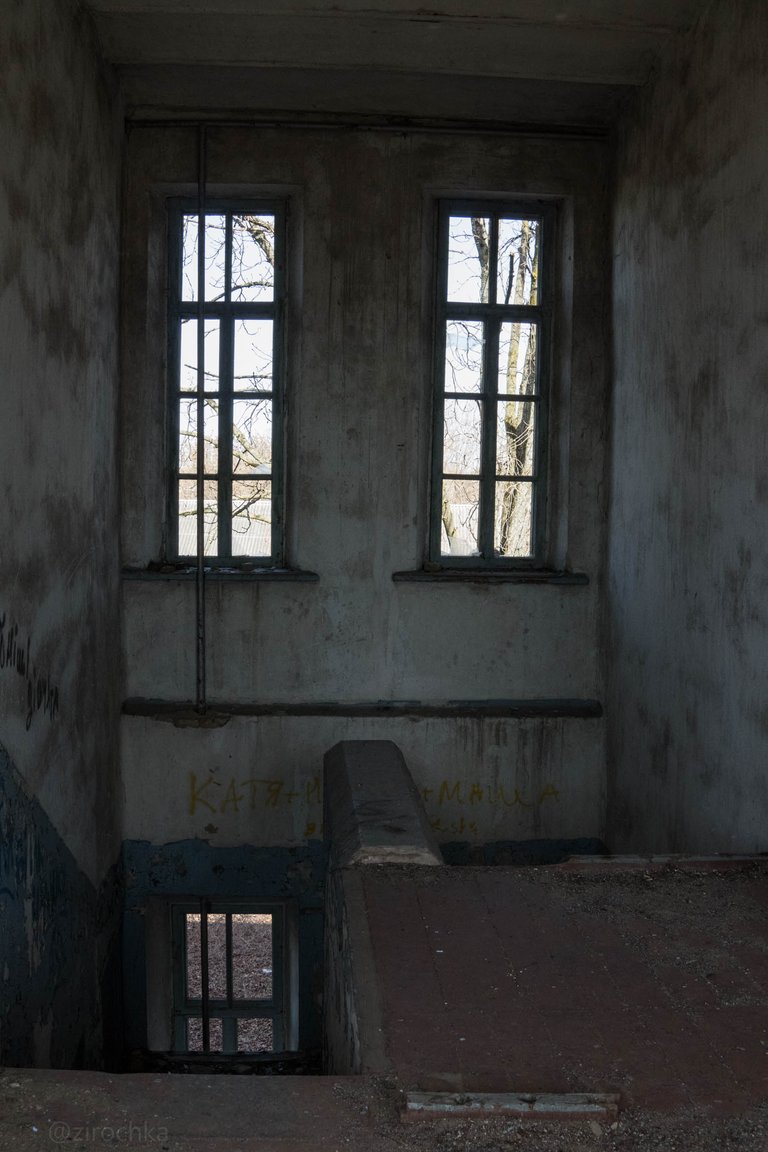
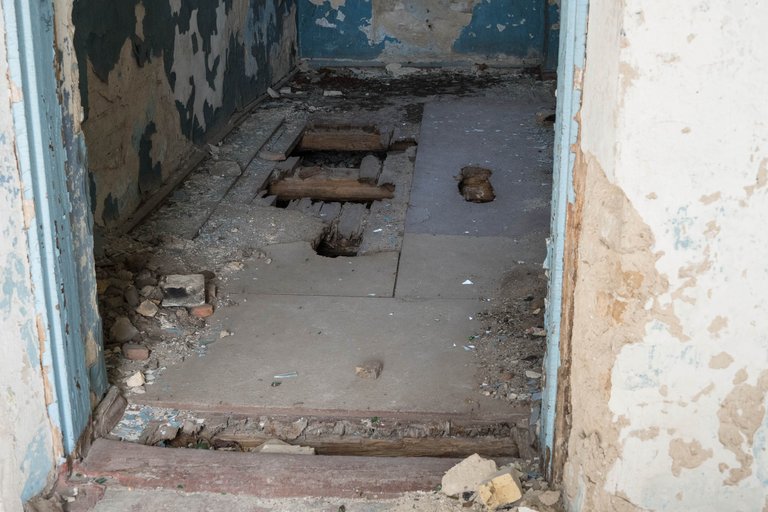
The school had furnace heating. I expected to see something much worse, I guess. That's why I saw beauty even in this mess.
Spacious rooms, large windows, stairs... Walls. All that survived. Over the years, everything valuable was taken from the building, even the metal elements of the furnace heating and electrical wiring.
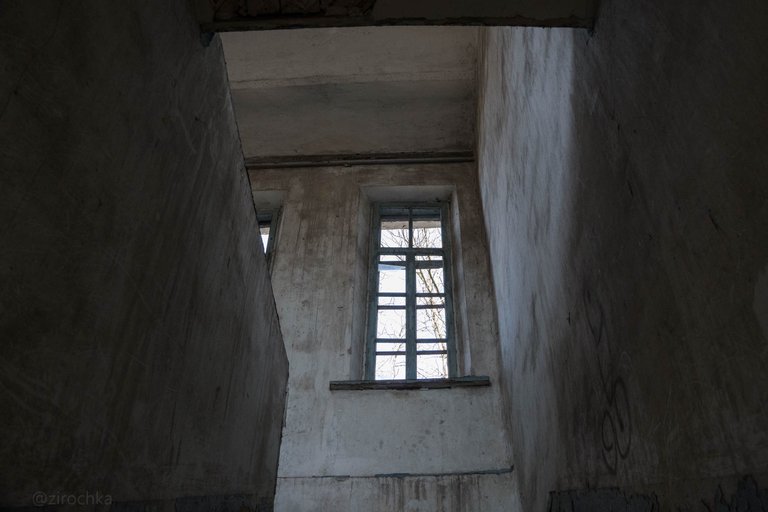
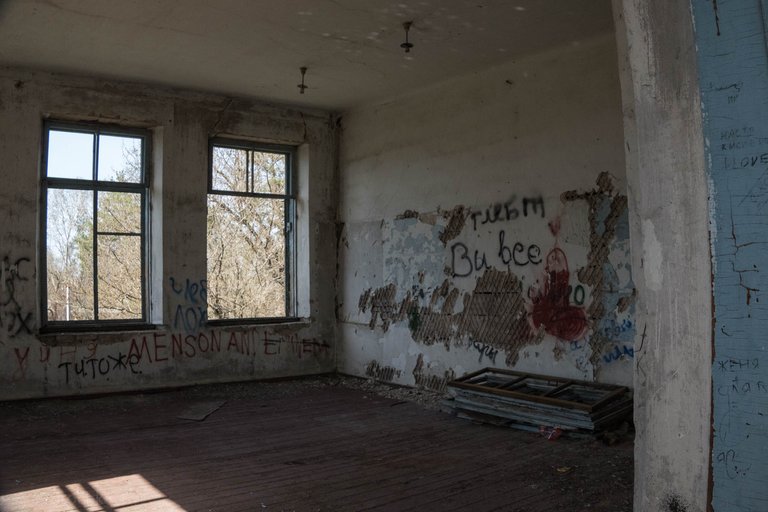
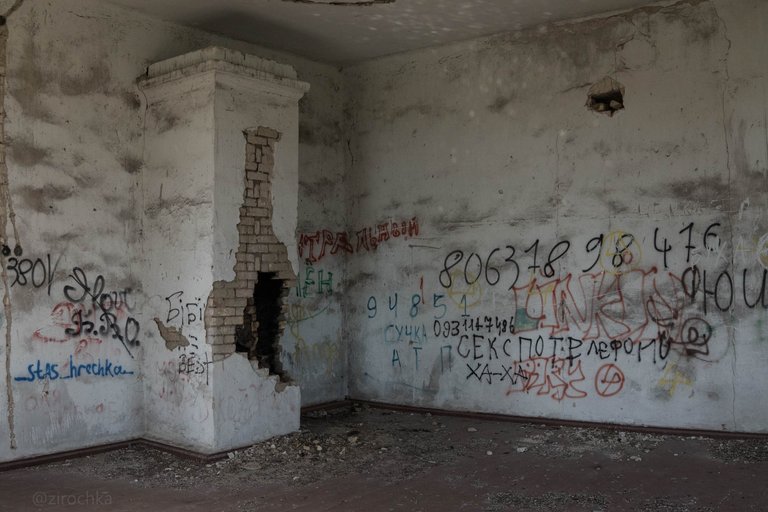
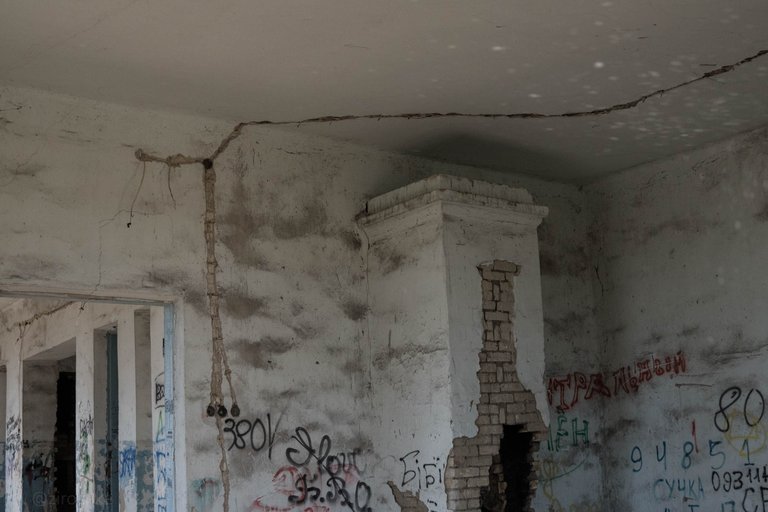
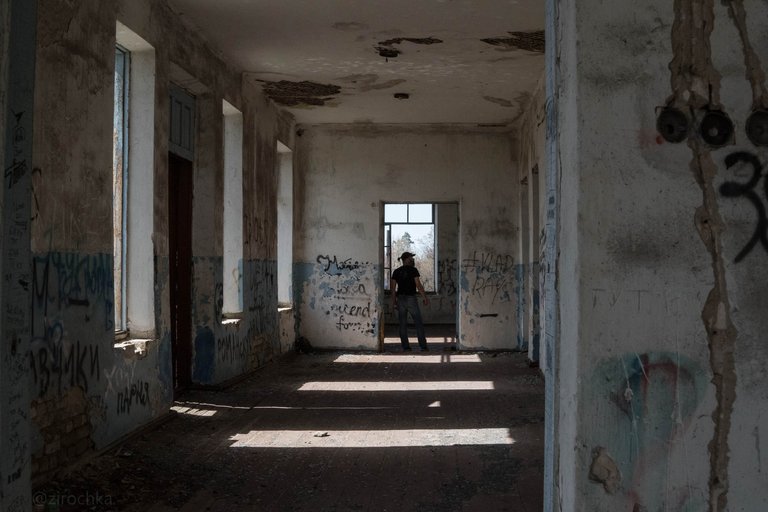
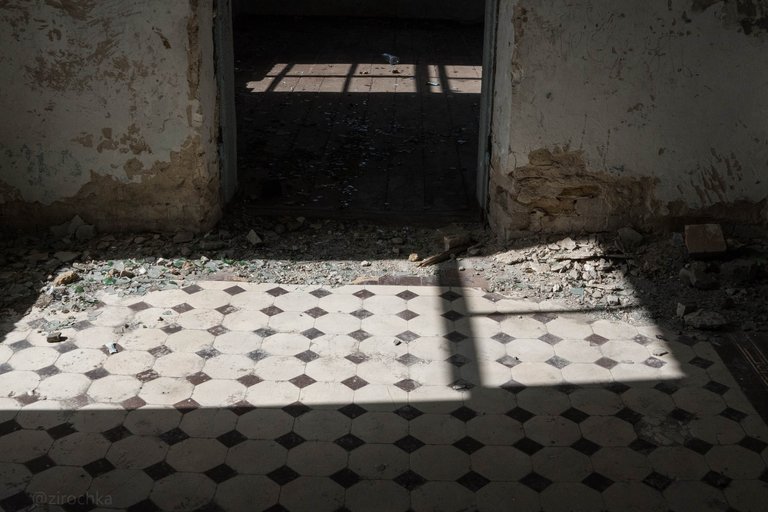
The original tiles have survived on the floor.
I wonder what it will turn into in a decade. Or will it just disappear? Now the Russian war has been added to human greed and indifference to cultural heritage.


The final look at the Chancellery, and we move on.

We had to return to Kyiv by 6 PM. We were far from home, besides the driving time is always hard to calculate precisely because of traffic jams, possible accidents on the highways etc. So I was a bit nervous. In addition, we were both starving! We traveled by car and I grabbed some meals from home but it turned out it wasn't enough. My bad.
Anyway, Nick would rather head toward home, but I somehow persuaded him to check out the last spot - the Shevchenko Museum.
Shevchenko Museum
I've been thinking about how to explain who is Taras Shevchenko to the uninformed reader. Sometimes context is highly important. You can refer to Wikipedia but I think you will not.
My blog, my vision. So, Shevchenko is like a national hero of all times for all Ukrainians. He was born on 9 March 1814 and died on 10 March 1861 (aged 47). He was a poet, novelist, painter, thinker, and public figure. He was very talented but was born a slave. Serfdom was slavery for "other whites".
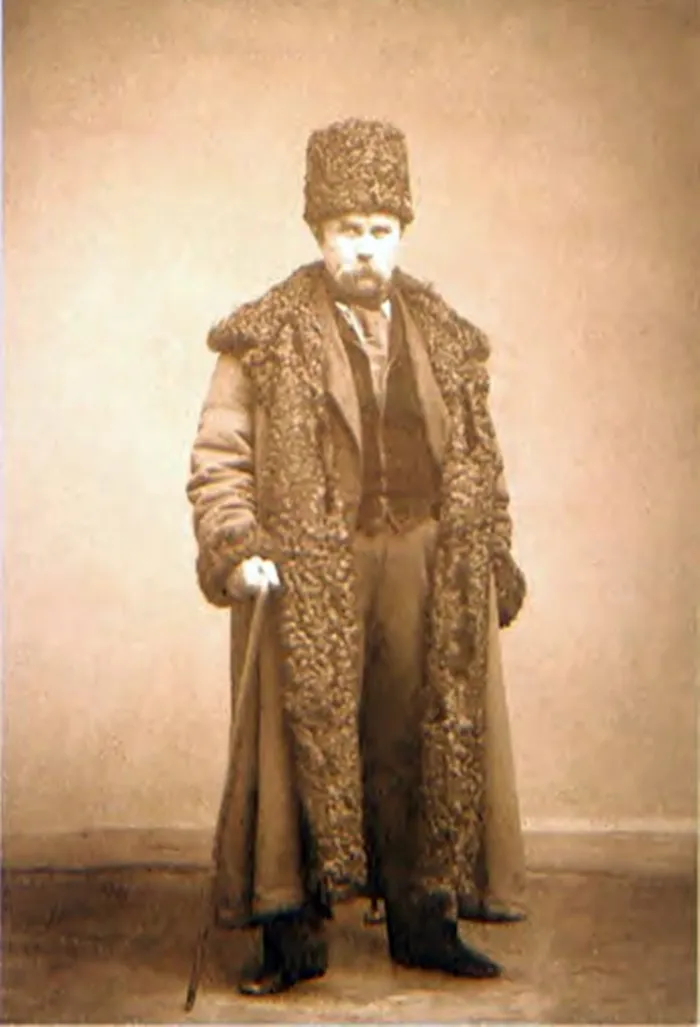 | 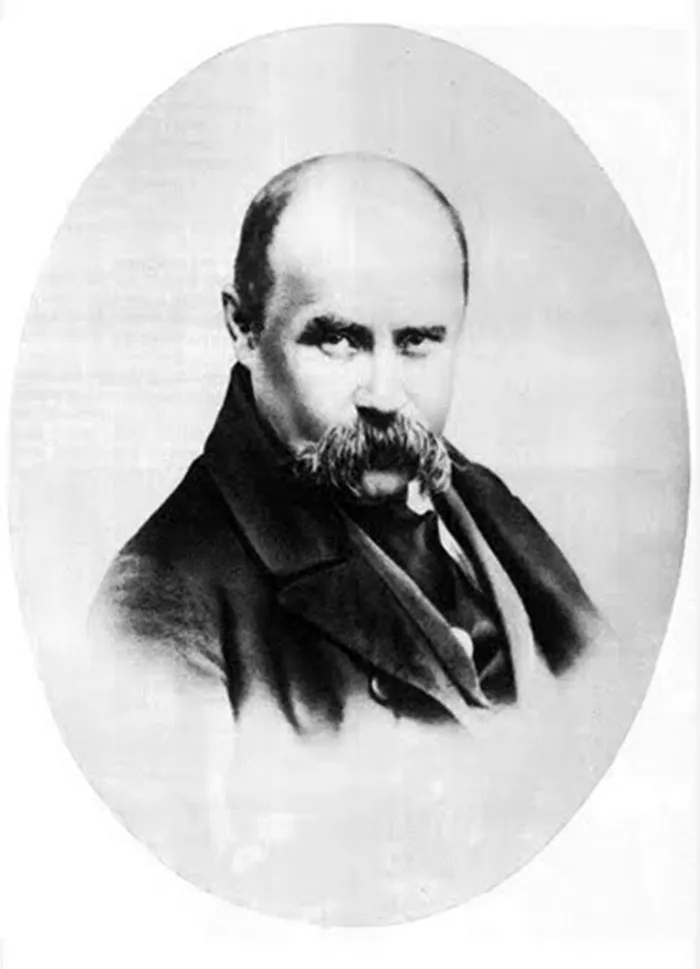 |
|---|
All his life he opposed and exposed the landlords and the Russian Empire. Empire, in turn, forbade him to write and sent him into exile from beautiful Ukraine to distant Siberia. He served his sentence, returned, and everything started from the beginning. Nowadays, it is unbelievable how relevant and prophetic (to ants) the words of his poems are.
But. Considering all above, the Bolshevik and Soviet regimes would very much like to erase the memory of Shevchenko, but this was impossible due to his extreme popularity. Therefore, they acted more cunningly, creating the illusion or own version of Shevchenko. From a fighter against the colonialist Russian Empire and specifically the Russians as enemies of the Ukrainian people, they turned him into a fighter against the rich for the rights of the poor. A small change of concepts - a little truth and a little lie.
He was presented as a representative of Ukrainian-speaking village culture, while high culture could only be Russian. Something so common and emasculated and therefore not dangerous.
Meanwhile, March 9 and 10, when the poet was born and died (the so-called Shevchenko days), were always a problem for the Soviet authorities. There was a period when laying flowers at the monument to Shevchenko in Kyiv was considered ideological sabotage. In those days, the square where his monument stands was surrounded by KGB workers.
So where this is going? There was Shevchenko street in every Ukrainian city and village, as well as Lenin street. Everyone studied his poems at school (without deep understanding though). There were so many monuments and museums of Shevchenko. There were so many of them and they were so similar and uninteresting, like a symbol of the past (only!), that it has become somewhat banal. My personal opinion. Meanwhile, the real Shevchenko along with the ideas and the context stayed in the shadow, undiscovered for the majority.
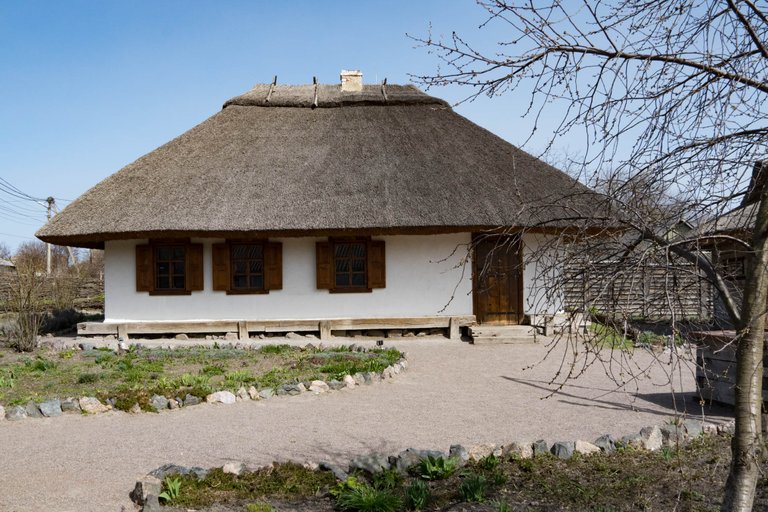
Now you understand what approximately Nick was feeling when I said "Let's check their Shevchenko Museum". But what we have found was a surprise for both of us.
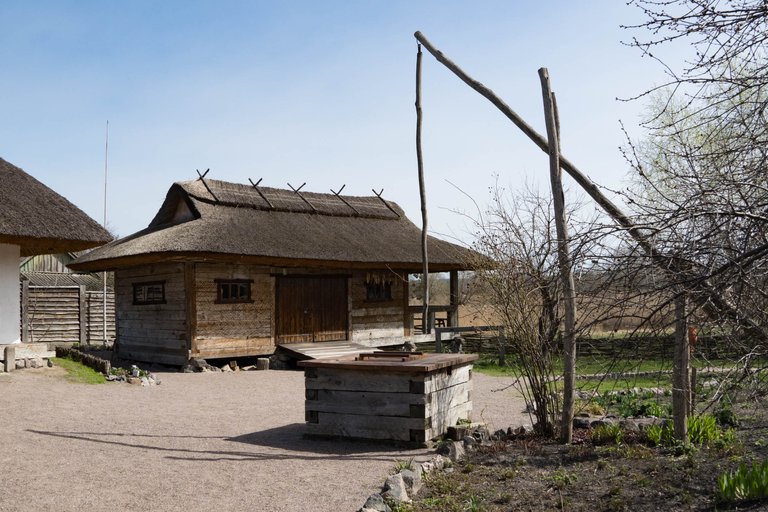 | 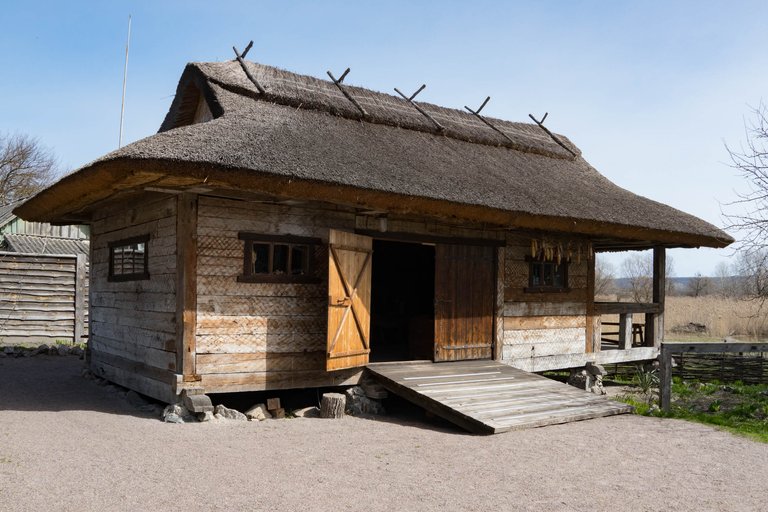 |
|---|
In the foreground of the photo is a well. We call it Crane (Zhuravel).
A small traditional Ukrainian house bought with all things from local women. Shevchenko really stayed here a few times. First, he visited his friends. He even had an intention to buy a house here in Moshny. But the seller did not show up, and Shevchenko was arrested later of the same day. Before being sent to exile, he spent several days in this house. It was the Naganovsky Inn, a guesthouse by the road for travelers.
We entered the yard and looked around. It was empty but so homie... I sat on pryzba under the thatching and just enjoyed. (Pryzba is a construction along the outer walls around the perimeter of the house to prevent freezing in winter and to protect against precipitation. It also served as a place for sitting and resting).
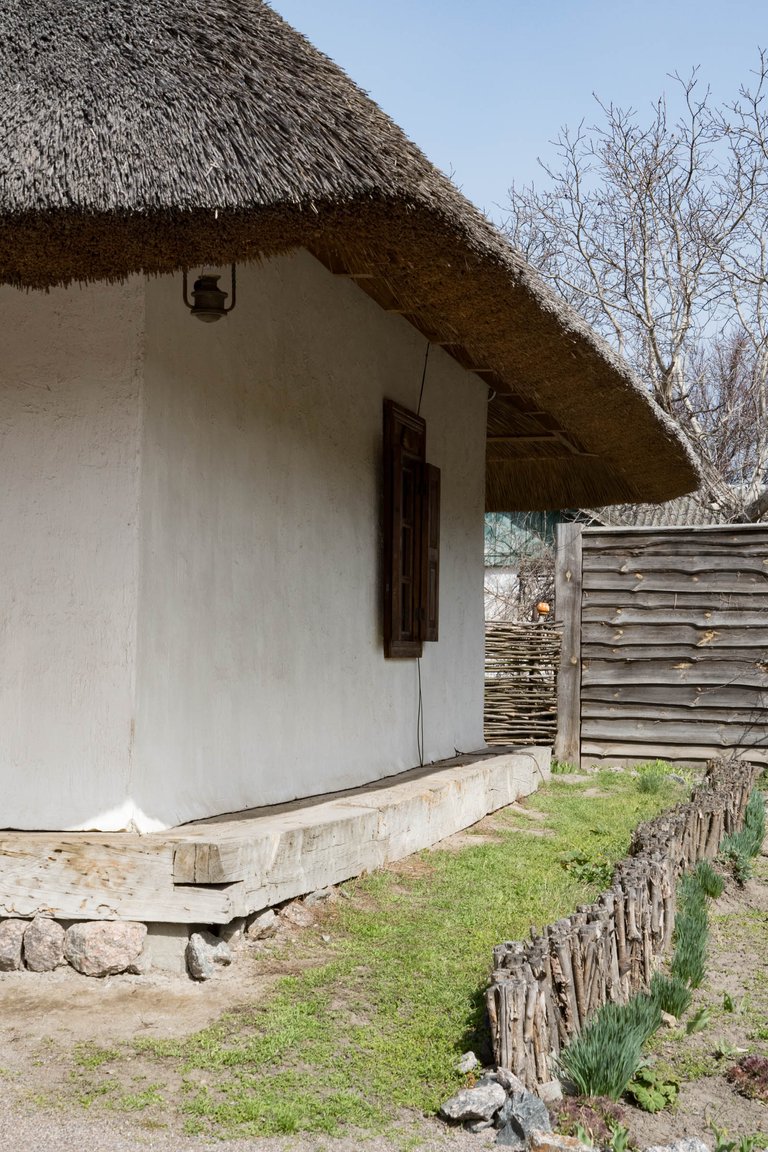
Soon, sounds were heard in the house and two ladies and a cat came out. The older one asked me why we didn't go in, and I asked how much the entrance ticket or tour cost. She said - nothing, it's free. Can you believe it??! The stuff is here... for free? Still can't understand how's it possible. By the way, the cat liked me at once. He came and sat by. The older lady said it was a rare case and asked whether I'd like to take the cat. I didn't want to deceive the cat with false expectations, so I just called Nick and we went inside.
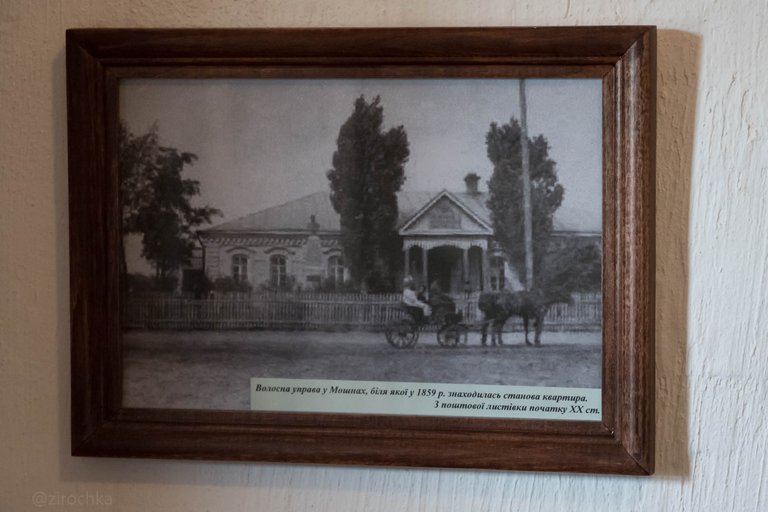
The lady who was also a guide (and a good one!) started her story. Her telling was smooth, like the flow of the local river Ros, enriched with beautiful, peculiarly Ukrainian words. According to the latest research by scientists, our language can contain up to a million words - that's a lot. Today's young people, especially those who rarely read, have a poor vocabulary, oversaturated with foreign and borrowed words. While our native words are so beautiful.
Original antique furniture, dishes, utensils, clothes, and embroidered towels have been preserved in the house. The ceiling, floor, thresholds and large stove - everything remained as it was in those days. I had the feeling that my ancestors were standing next to me...
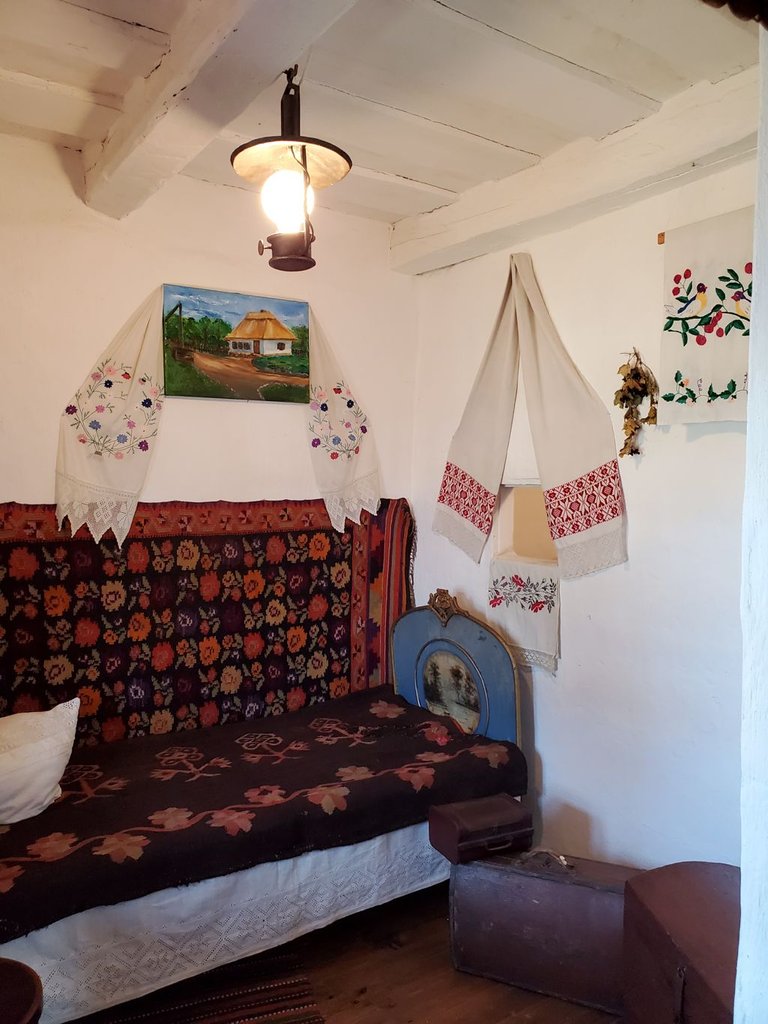 | 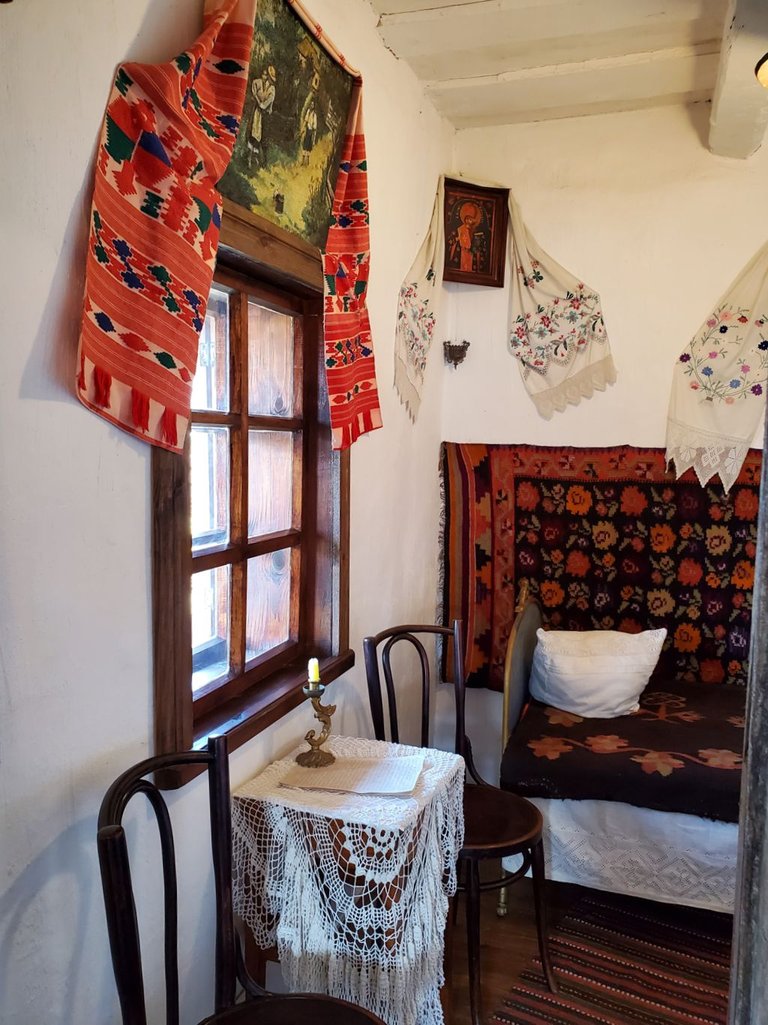 |  |
|---|---|---|
 | 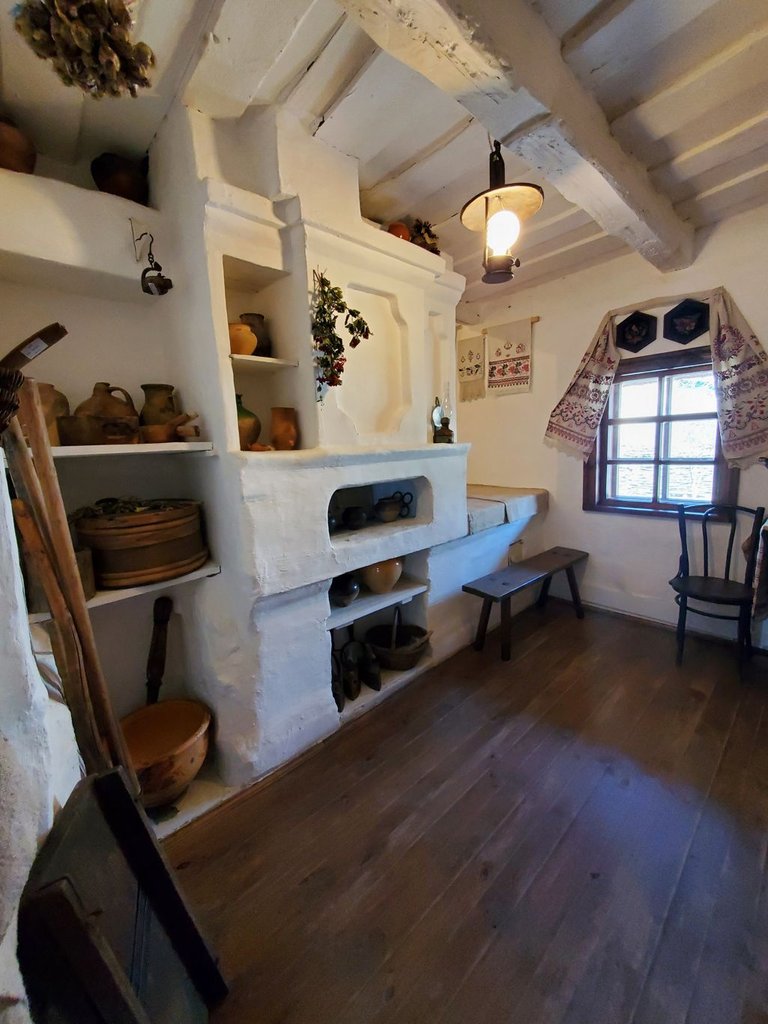 | 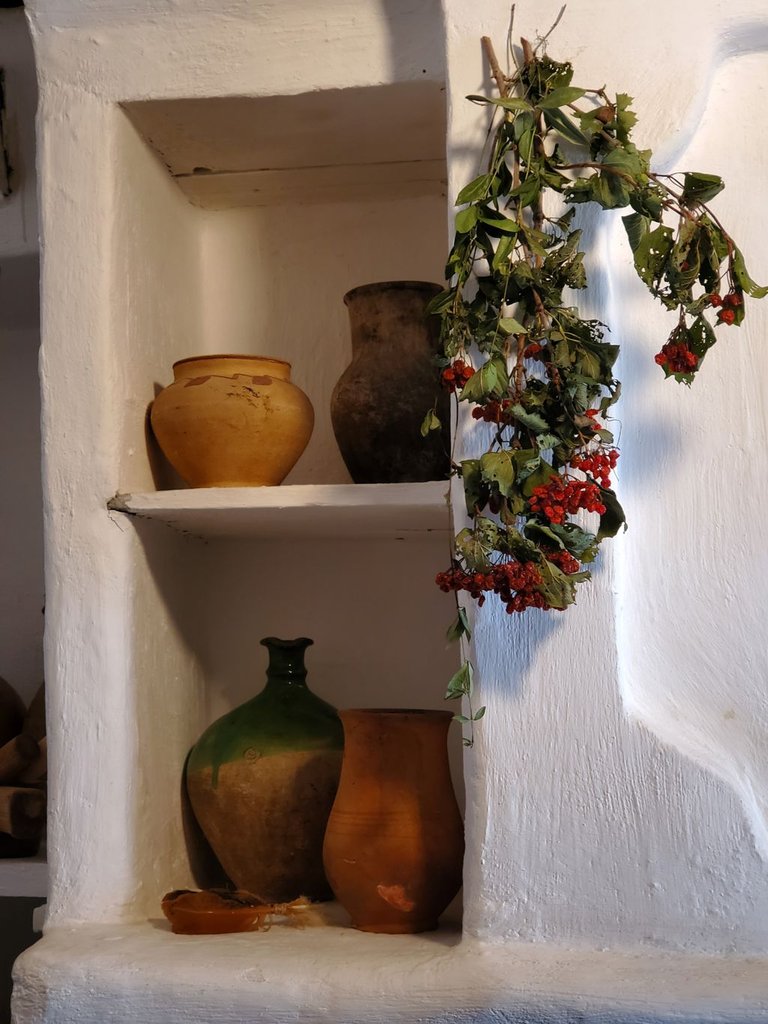 |
 | 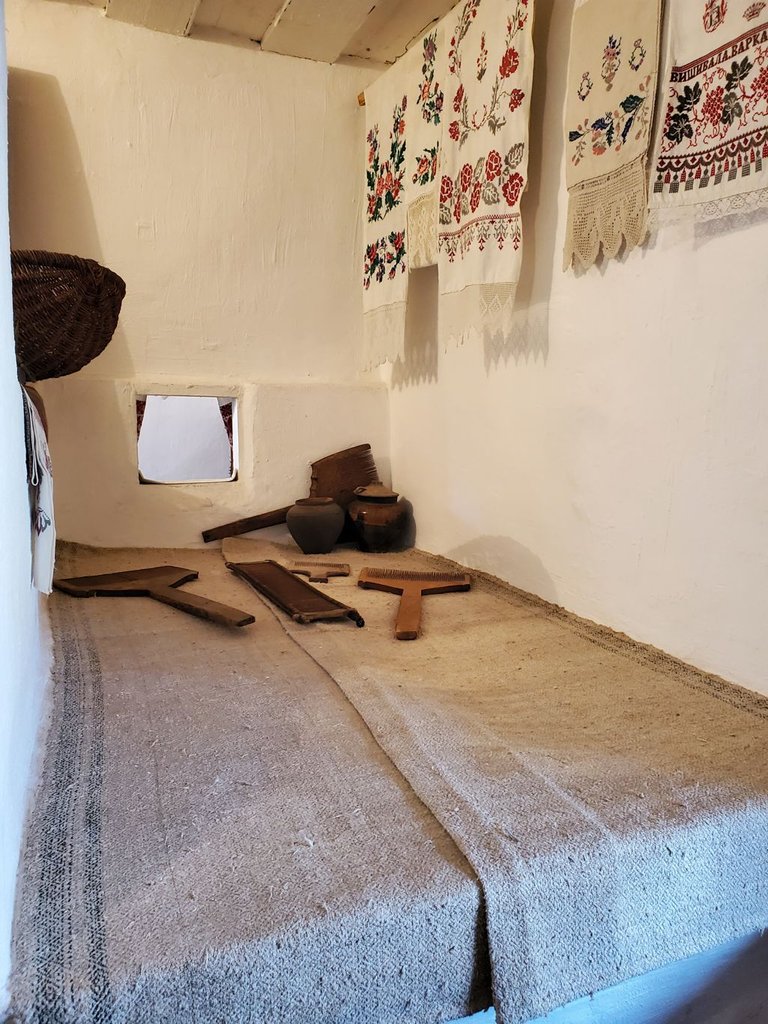 | 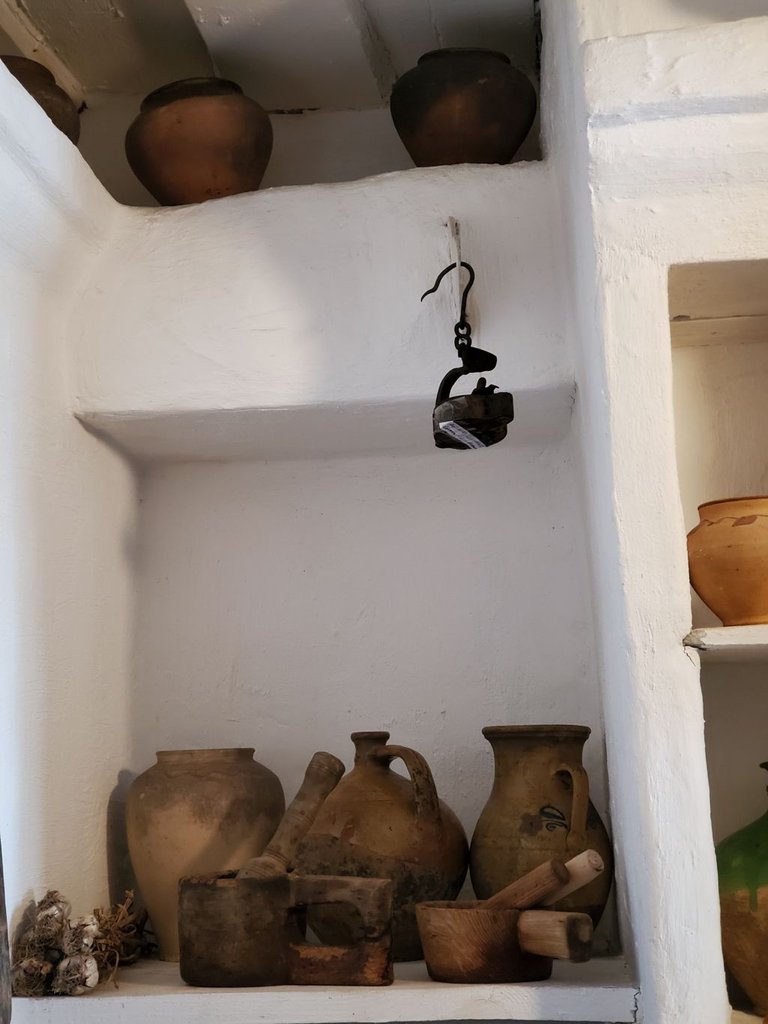 |
 | 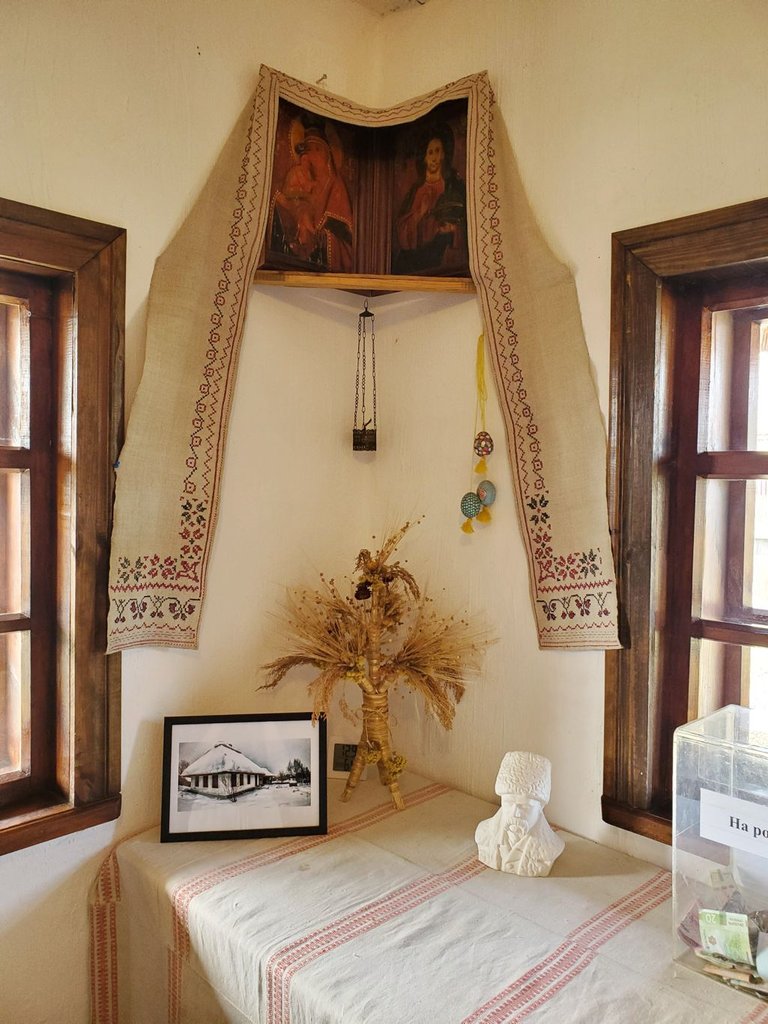 | 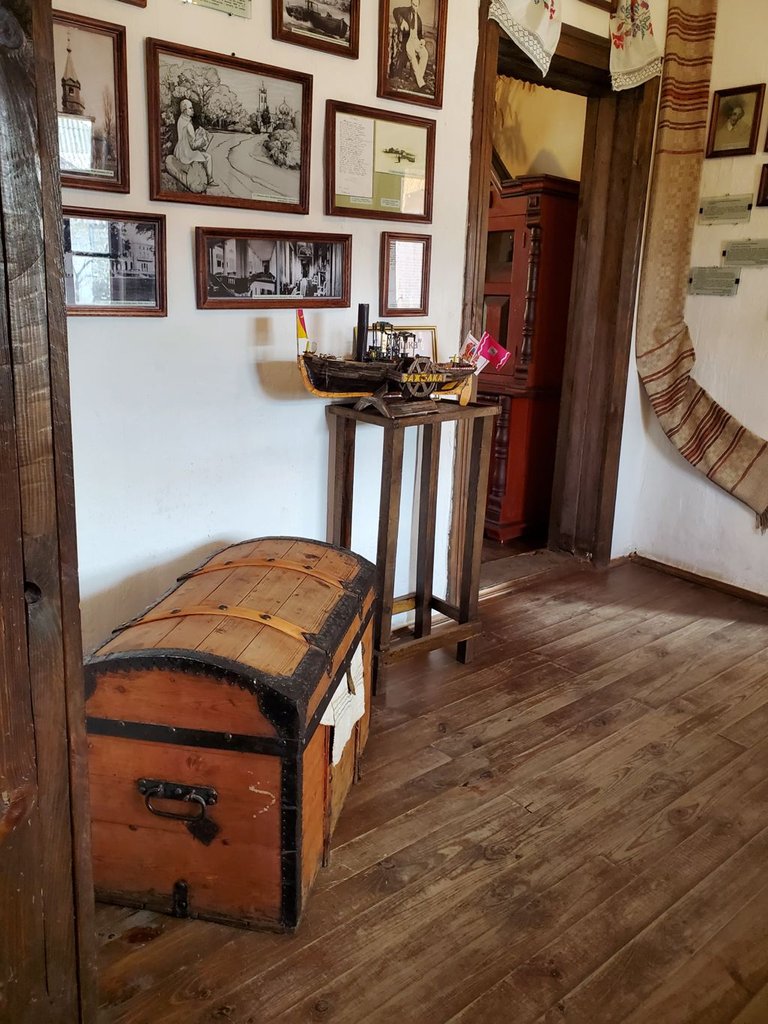 |
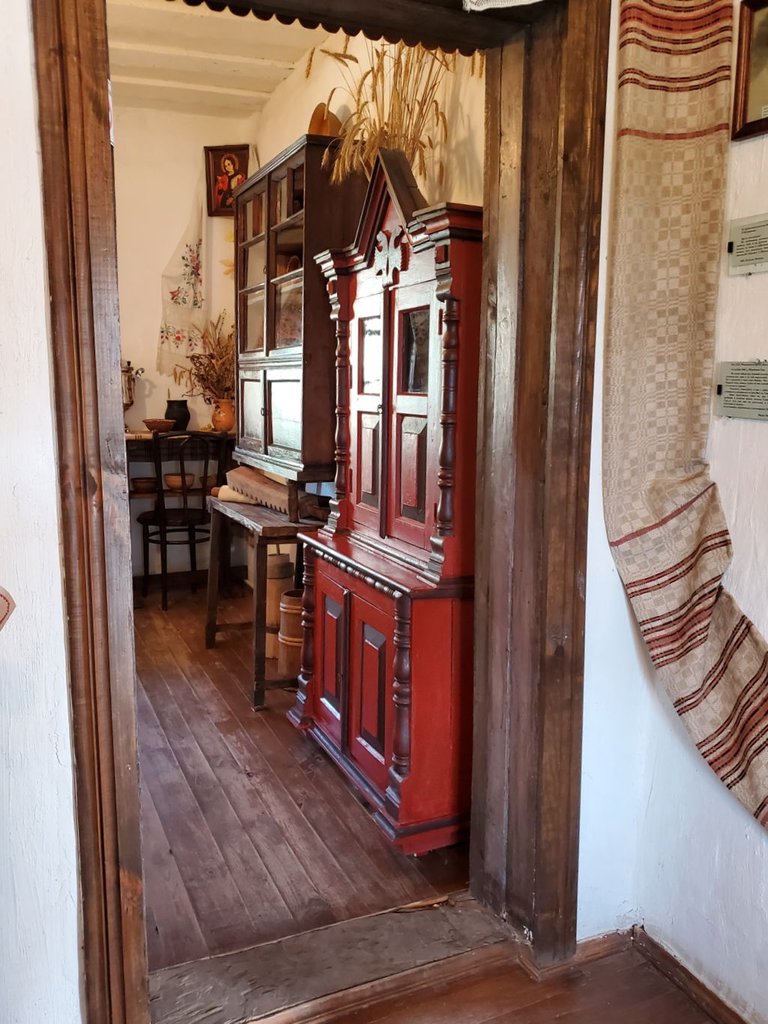
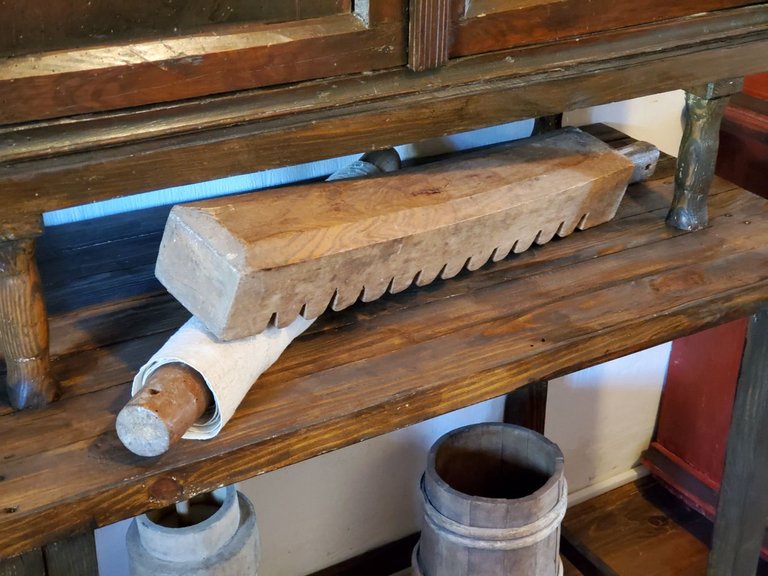
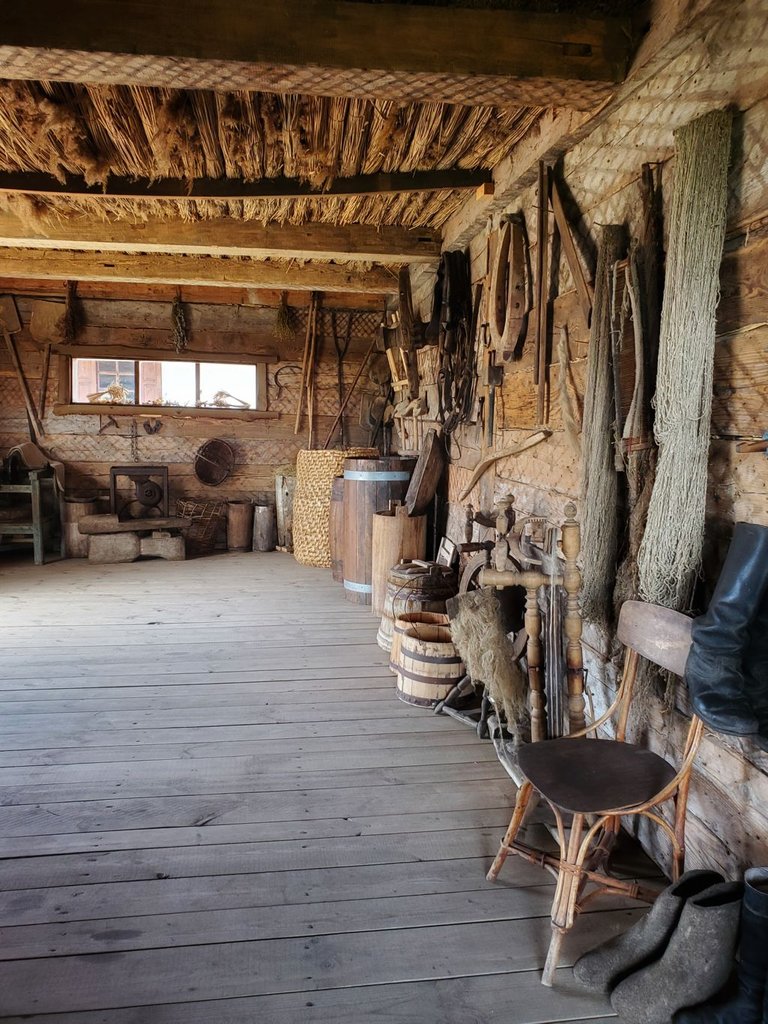

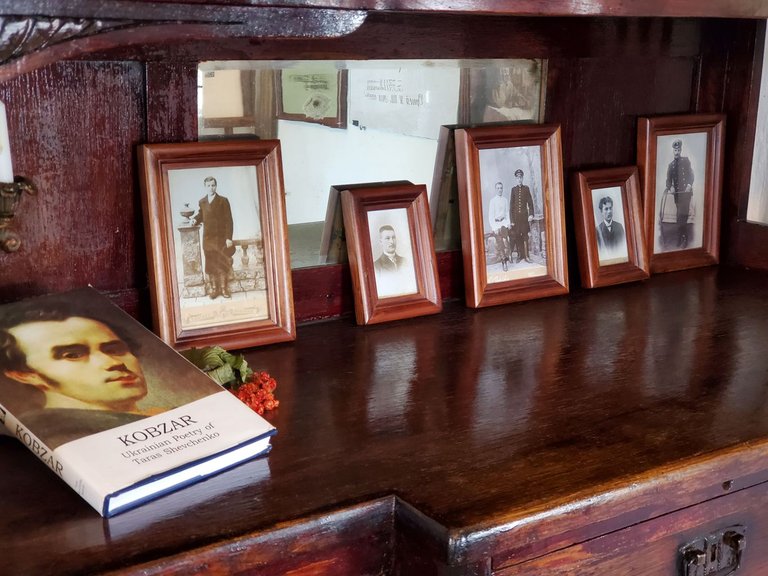

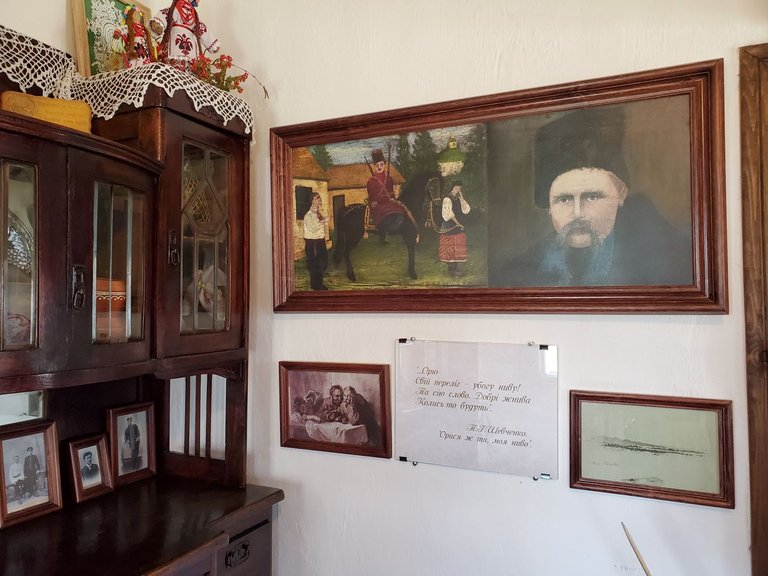
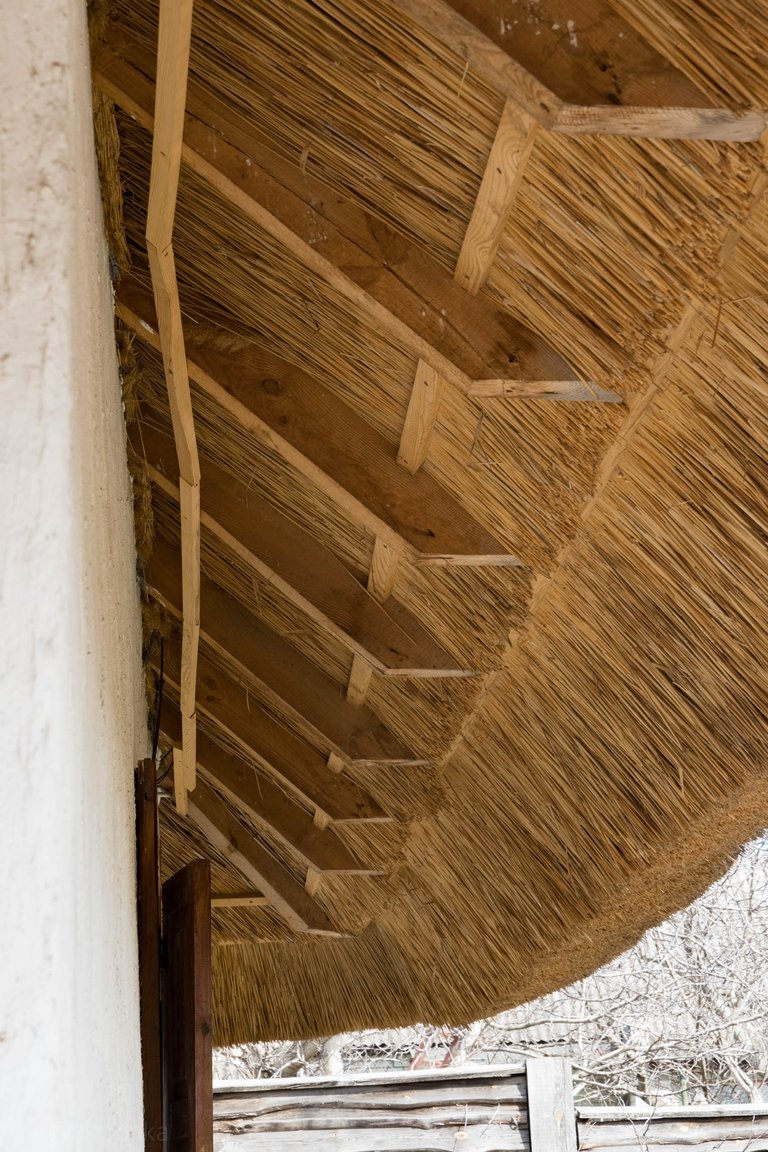
This reed root was renovated. I spotted a lot of bees swarming around the reed. It was unusual because, you know, it's just a dry reed, not anything sweet like fruits or blooming flowers.
Our kind lady-guide explained it to that - they live in this reed. Some rare kind of bees. I've never heard of bees who live in thatched or reed roofs.

After looking around the house, she took us to the barn. Our ancestors stored food and tools here. When it came to food, I felt so hungry again! Imagine, this lady proposed to have tea on the veranda. She opened the back door and we saw this view:
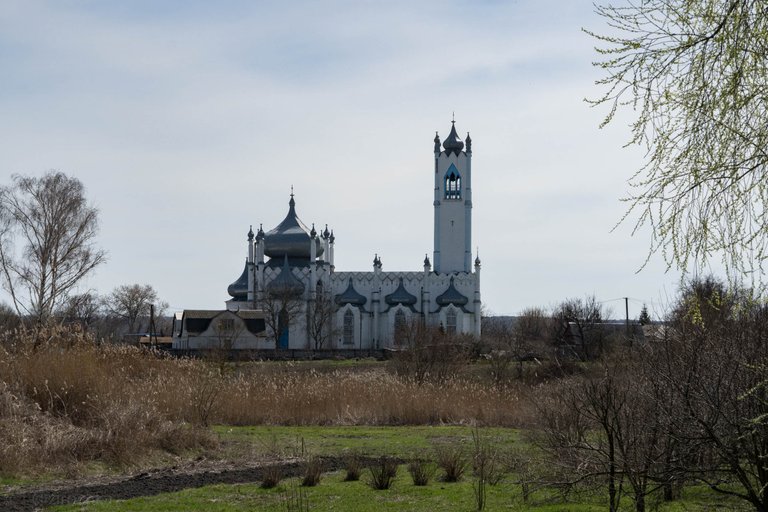
A farewell look at this marvelous church.
In the end, we left a voluntary donation of much more than the tickets or tour would have cost.
For many decades, we did not know what our heroes really were. Whom they loved and against whom they fought. We do not know an even greater number of our great poets, artists, or dramatists at all or know very little. They were shot and sent to Siberia when they were young, and their memory was carefully erased for decades or even centuries, and substituted by "Russian culture" day by day. But Russian culture was followed by Russian tanks.
Remember the winged lion that was the symbol of the Republic of Venice? There was also a saying "Where the Venetian lion is, there is Venice". Think about it.
Now all Ukrainians are thirsty for their culture and history. Without this, there is no freedom, and no future.

That's it!
Thank you for your time, and hope to see you again soon.
Stay tuned,
💙💛
The cover of this post was created with Canva.
All pictures above are taken by me and can't be used without my consent.
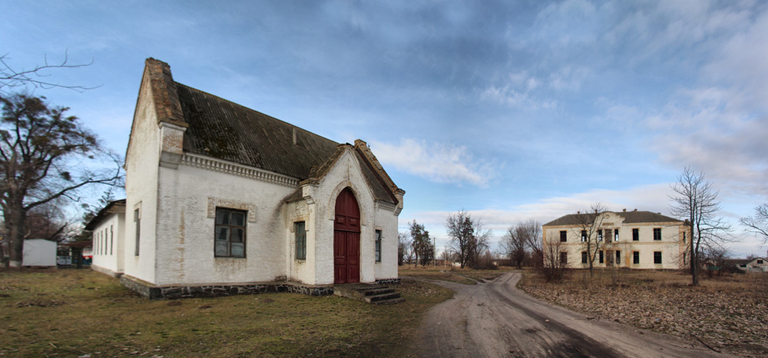 This photo from the site of the Cutrural Space Moshny project
This photo from the site of the Cutrural Space Moshny project
Congratulations, your post has been added to Pinmapple! 🎉🥳🍍
Did you know you have your own profile map?
And every post has their own map too!
Want to have your post on the map too?
!BEER
View or trade
BEER.Hey @zirochka, here is a little bit of
BEERfrom @pixresteemer for you. Enjoy it!We love your support by voting @detlev.witness on HIVE .
Building made in old techniques, excellent engineering.
I'm with you on that.
Hiya, @livinguktaiwan here, just swinging by to let you know that this post made it into our Honorable Mentions in Travel Digest #2185.
Your post has been manually curated by the @pinmapple team. If you like what we're doing, please drop by to check out all the rest of today's great posts and consider supporting other authors like yourself and us so we can keep the project going!
Become part of our travel community:
🤗🤗🤗
!BEER
View or trade
BEER.Hey @pinmapple, here is a little bit of
BEERfrom @zirochka for you. Enjoy it!Did you know that <a href='https://dcity.io/cityyou can use BEER at dCity game to buy cards to rule the world.
Fantastic!! I am glad you got into that school ans soaked up the history, the floor tiles are really cool.......welcome to the wonderful world of urbex lol.
LOL
Wow - I'm still loving that church !!!
This is definitely a case where the unusual and the magnificent do not contradict each other 🙂
!LUV
hoosie, zirochka sent you LUV. 🙂 (1/1) tools | trade | connect | wiki | daily
Made with LUV by crrdlx.